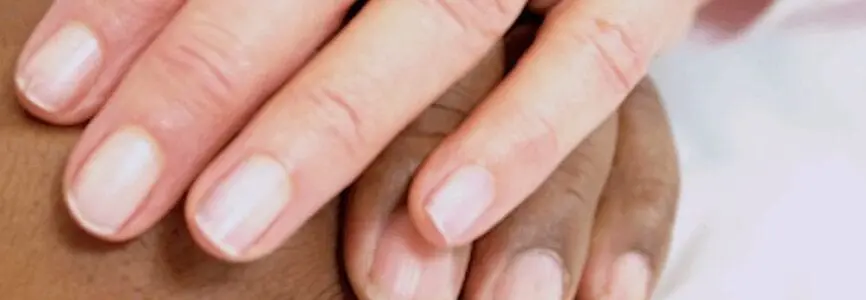Bioethics Forum Essay
Jahi McMath, Race, and Bioethics
Twice upon a time, there was a girl who died. The death certificate that New Jersey issued to 17-year-old Jahi McMath on June 22 was the second one issued for her. California issued McMath’s first death certificate in December 2013. McMath had been admitted to Children’s Hospital Oakland on December 9 for a routine tonsillectomy and suffered complications that resulted in a diagnosis of brain death. Her family’s refusal to accept the diagnosis sparked much controversy and debate about the nature and diagnosis of brain death, the proper consideration of a patient’s or family’s religious views of death and perspectives on organ donation, and how accommodating hospitals should be toward bereaved families.
All of these issues are incredibly important, and how they are resolved has significant consequences for hospital practices, health policy, and bioethics. Although there seems to be no dispute that the Oakland hospital followed California state law, it could have responded with greater sensitivity to McMath’s family. As Junaid Nabi put it in a Bioethics Forum essay, emotional intelligence on the part of health care professionals and effective communication are critical in difficult cases like this one.
Nabi relies heavily on the family’s account in The New Yorker to make the case that the family likely felt disrespected in their interactions with hospital personnel. Nabi offers a clear, thoughtful account of the ways that greater emotional intelligence on the part of the hospital may have left the family feeling more respected and may have avoided a protracted court battle. Nabi further acknowledges that historical injustices against African Americans in the U.S. health care system contribute to continuing feelings of mistrust.
Bioethicists can learn from this tragic case, especially the ways that race may have shaped the interactions between the hospital and the family. The history of African Americans’ experience with the U.S. medical system is filled with examples of nonconsensual experimentation practiced by medical schools, and in the case of the Tuskegee syphilis study, sponsored by the U.S. Public Health Service. Mistrust continues to influence interactions with the U.S. medical system for many African Americans.
My colleagues and I have written that bioethicists can and should work to address racism. It is possible to acknowledge the history of racist medical practices that underlie the mistrust that many African Americans feel toward the U.S. health care system and to acknowledge that McMath’s family believed that race was a factor in the disrespect they felt without assigning racist intentions to the hospital personnel in McMath’s case. In this instance, bioethicists bring useful tools to the clinical environment. One of the roles that bioethicists occupy in hospital settings is mediating conflict within families and between patients and/or families and hospital personnel. To do this effectively in cases where at least one party believes race to be a factor in quality of care, bioethicists have to be aware of the history and basis for this belief and cannot shy away from uncomfortable conversations about race.
I am not suggesting that bioethicists should automatically presume that a charge of racism or racial bias is correct. I am suggesting that bioethicists can bring to the table a level of cultural sensitivity and awareness of how race can (and often does) shape perception. This understanding can be useful in gaining clarity about the issues at hand and helping to find a solution. This cultural awareness and willingness to address race, even when uncomfortable, wouldn’t replace the role of emotional intelligence, but it could provide additional nuance in cases where race may be a factor.
Bioethicists in the clinical environment are tasked with being respectful to all parties when there is conflict. Honesty about the role that race sometimes plays in these interactions is an important start. In her post, “White Privilege and Playing it Safe,” Denise Dudzinski writes that sometimes the use sanitizing language such as the “’difficulties’ of caring for minority patients” masks racial bias. It is easy to ignore the reality of racial bias and racism when “softer” language is used. Limiting this kind of language and simply acknowledging a patient’s or family’s concerns can go a long way to making patients and families feel heard and, in turn, creating an environment where patients and families can hear unpleasant diagnoses. But this can only happen if bioethicists step up to the plate on race.
In the same post, Dudzinski writes: “Many white bioethicists like myself have sidestepped robust engagement with systemic racism. Having not experienced racism first-hand, we have the privilege of ignoring it if we choose.” I contend that bioethicists have an important contribution to make in helping patients, families, and clinicians recognize and understand the ways that race operates in the background of their interactions. If bioethicists are serious about working to bring about just health care then they cannot continue to play it safe.
Yolonda Wilson, PhD, is an assistant professor of philosophy at Howard University. Twitter: @profyolonda.
45% of The Hastings Center’s work is supported by individual donors like you.
Support our work.














If you look hard for racism, you will find it anywhere and everywhere, or perhaps nowhere. What you are describing seems to be a different, but interesting kind of bias, not racial bias, but a perceptual bias.